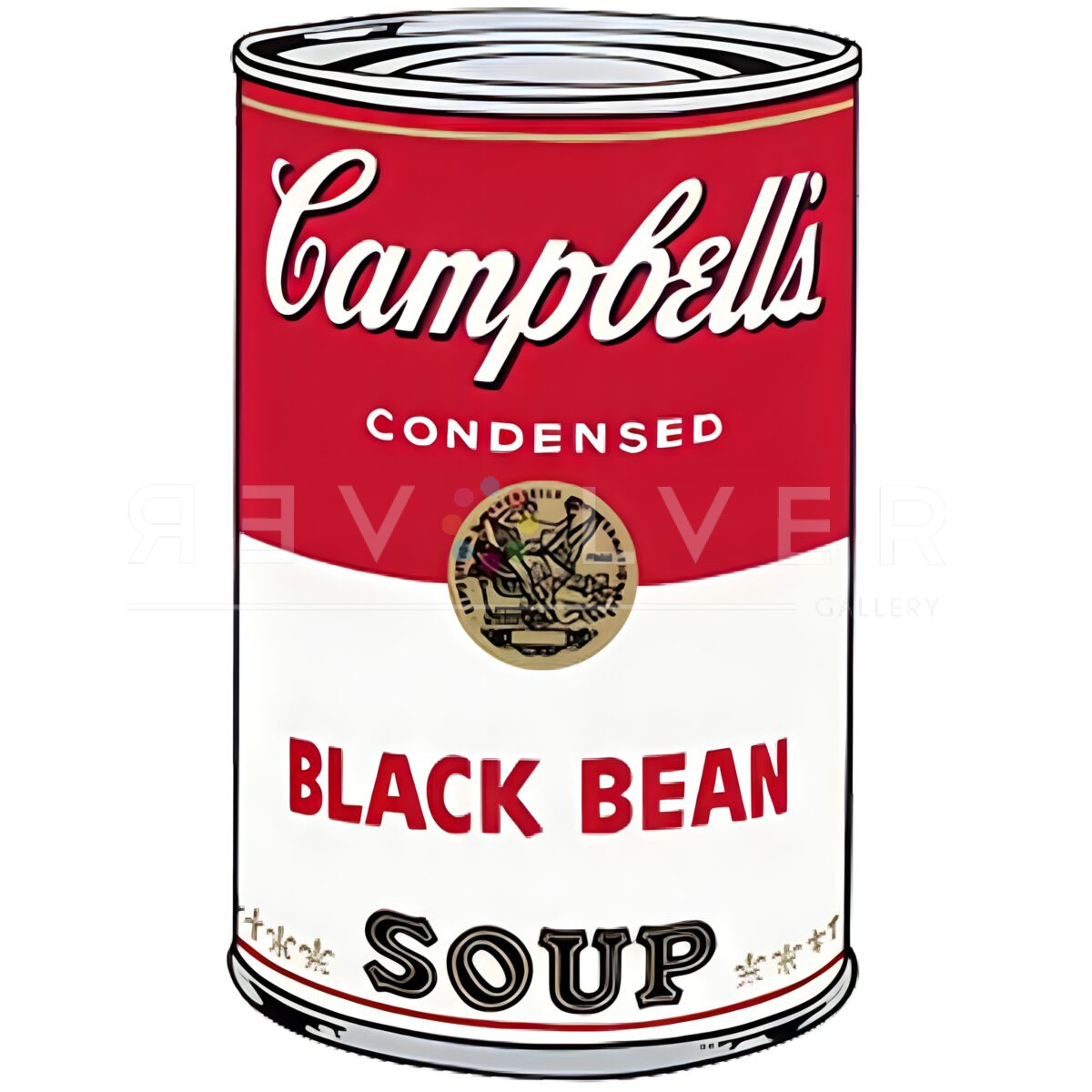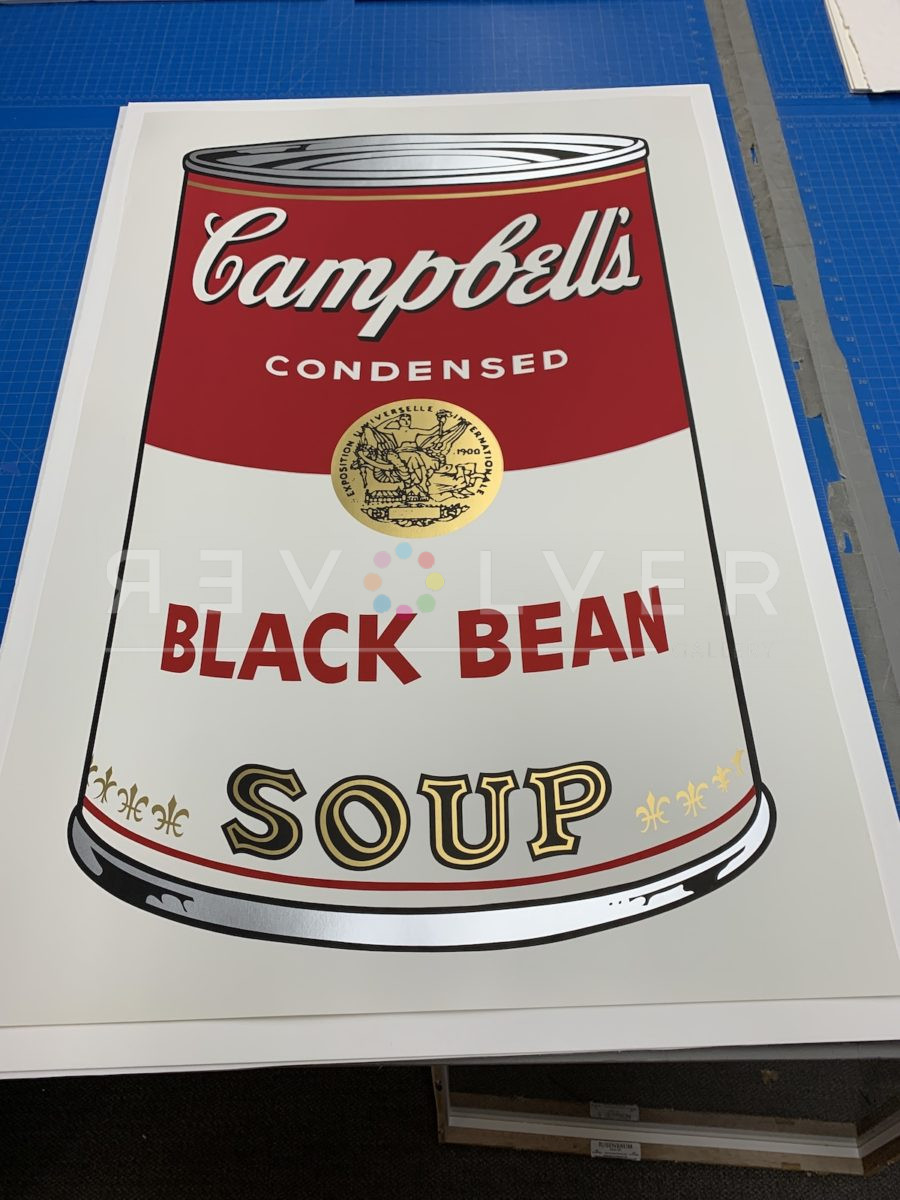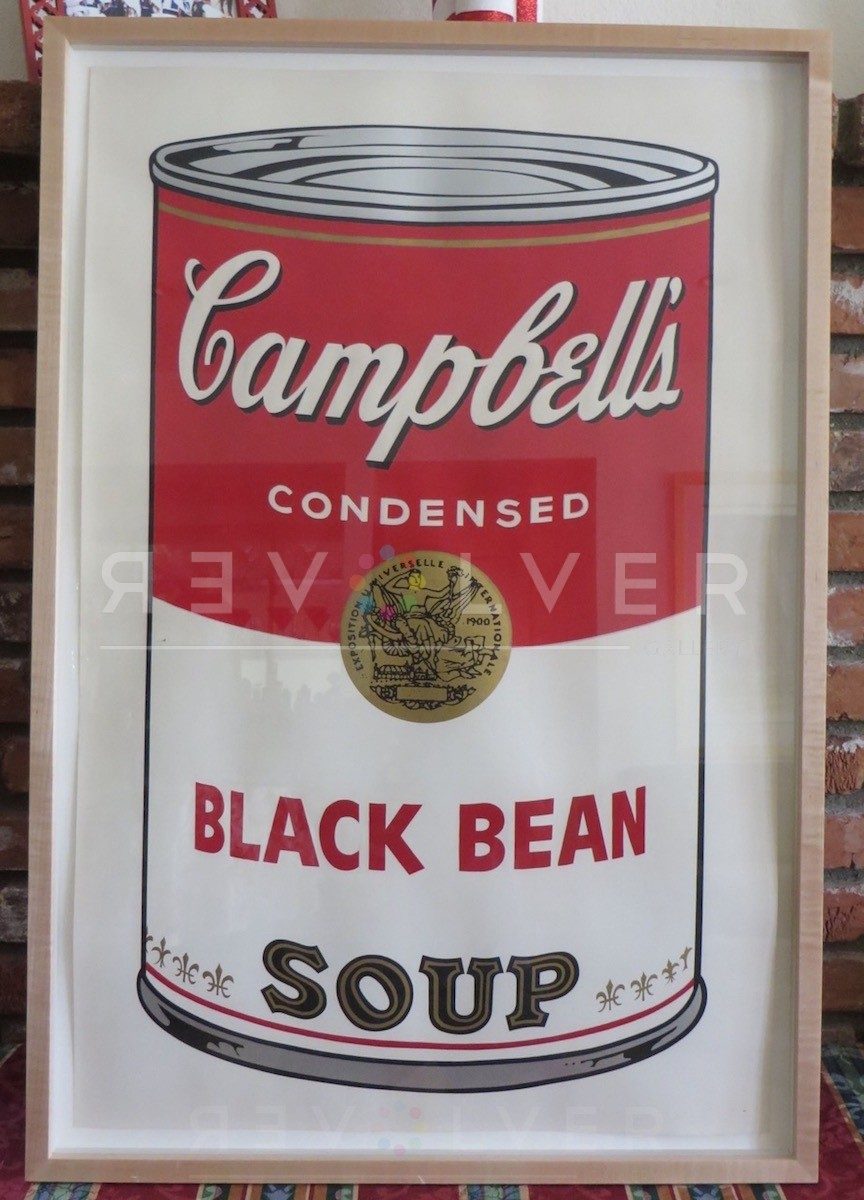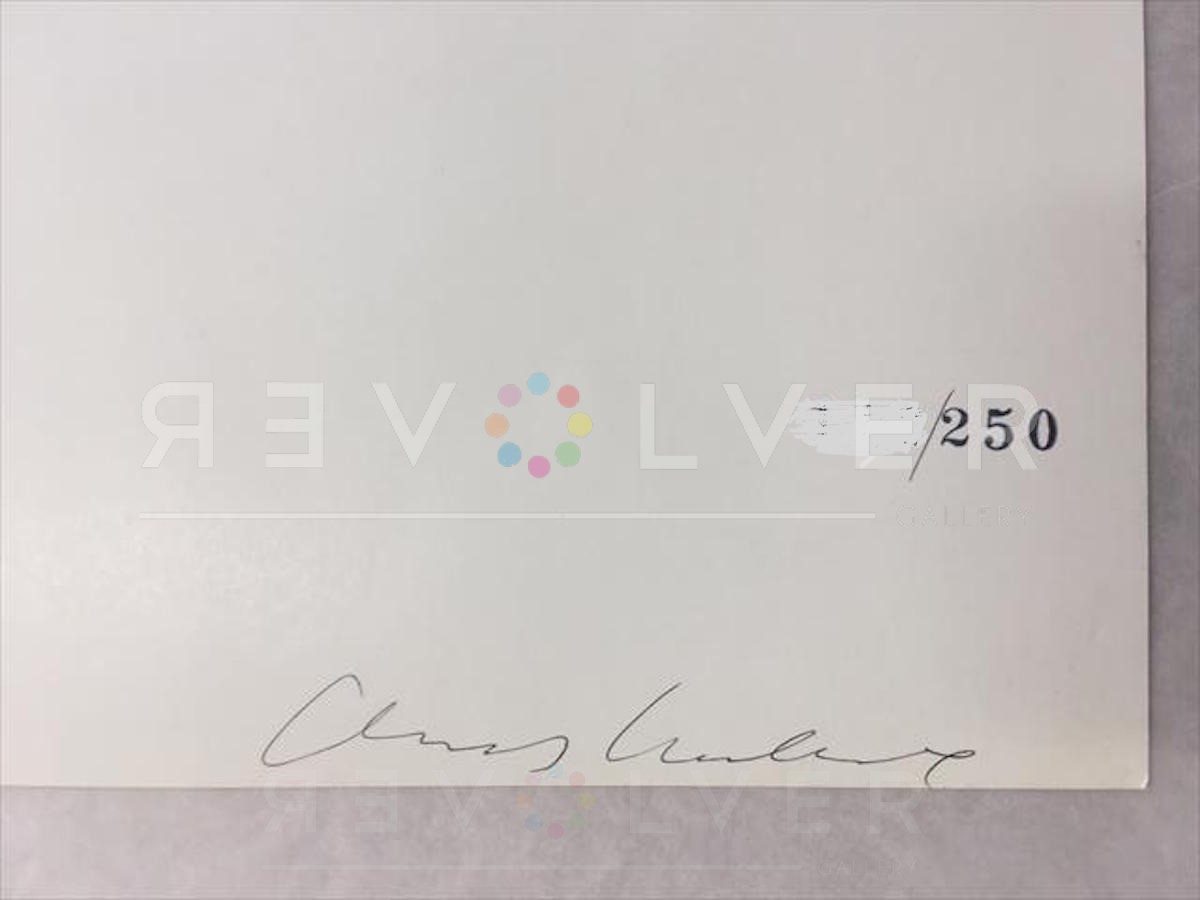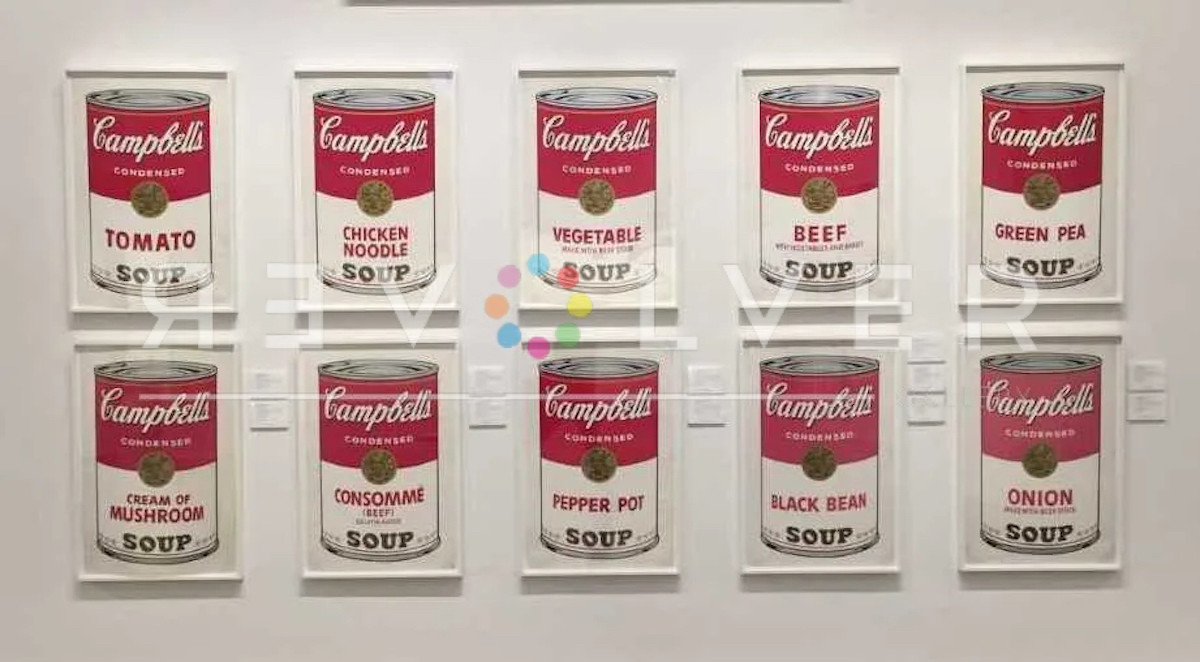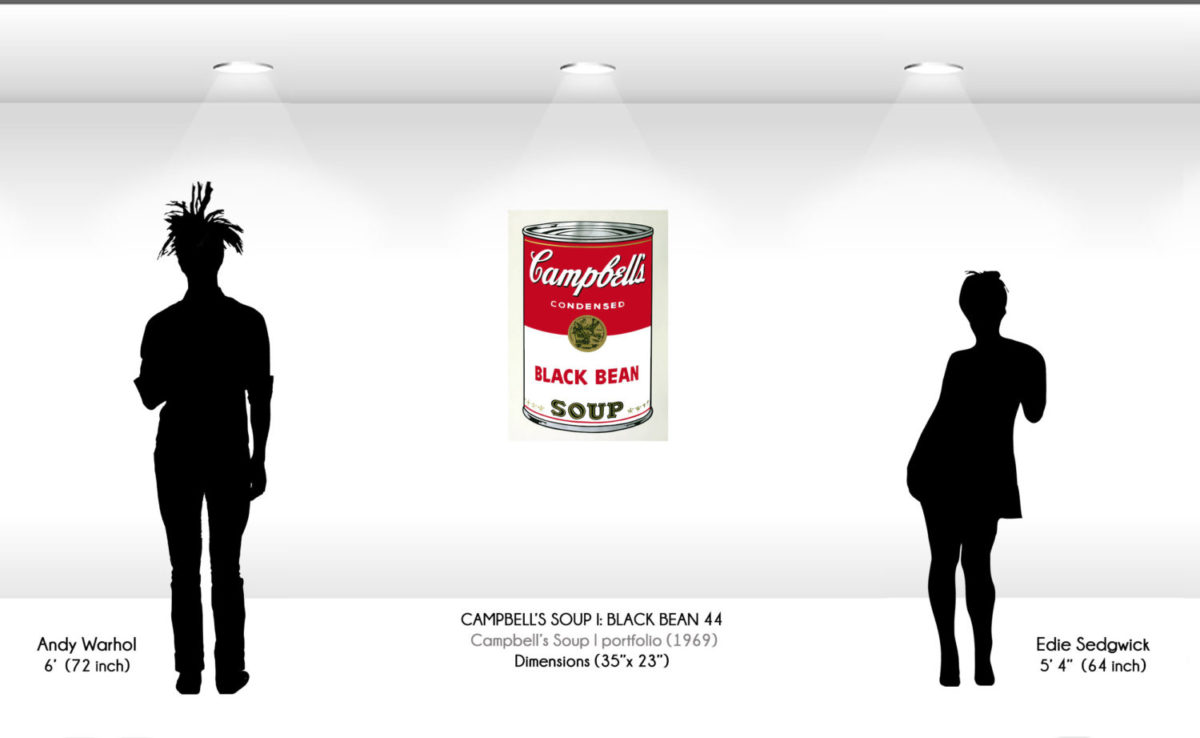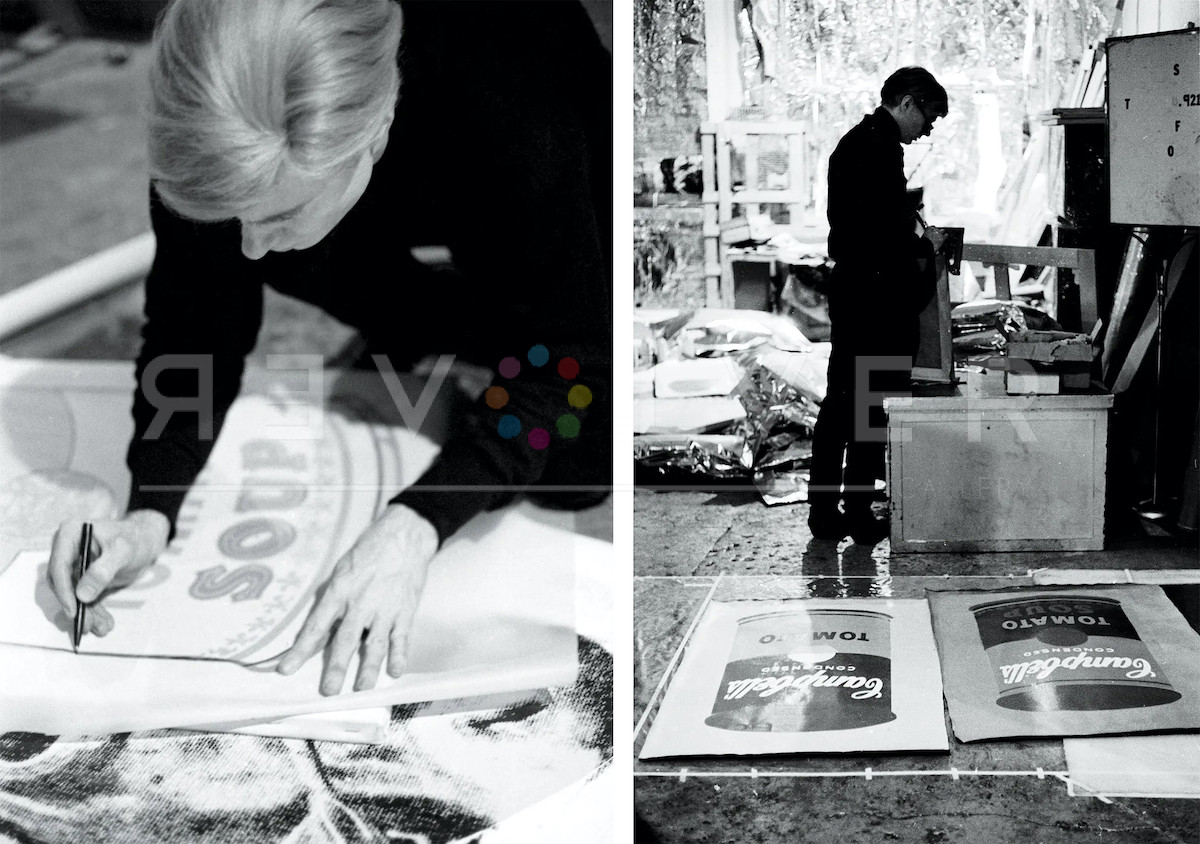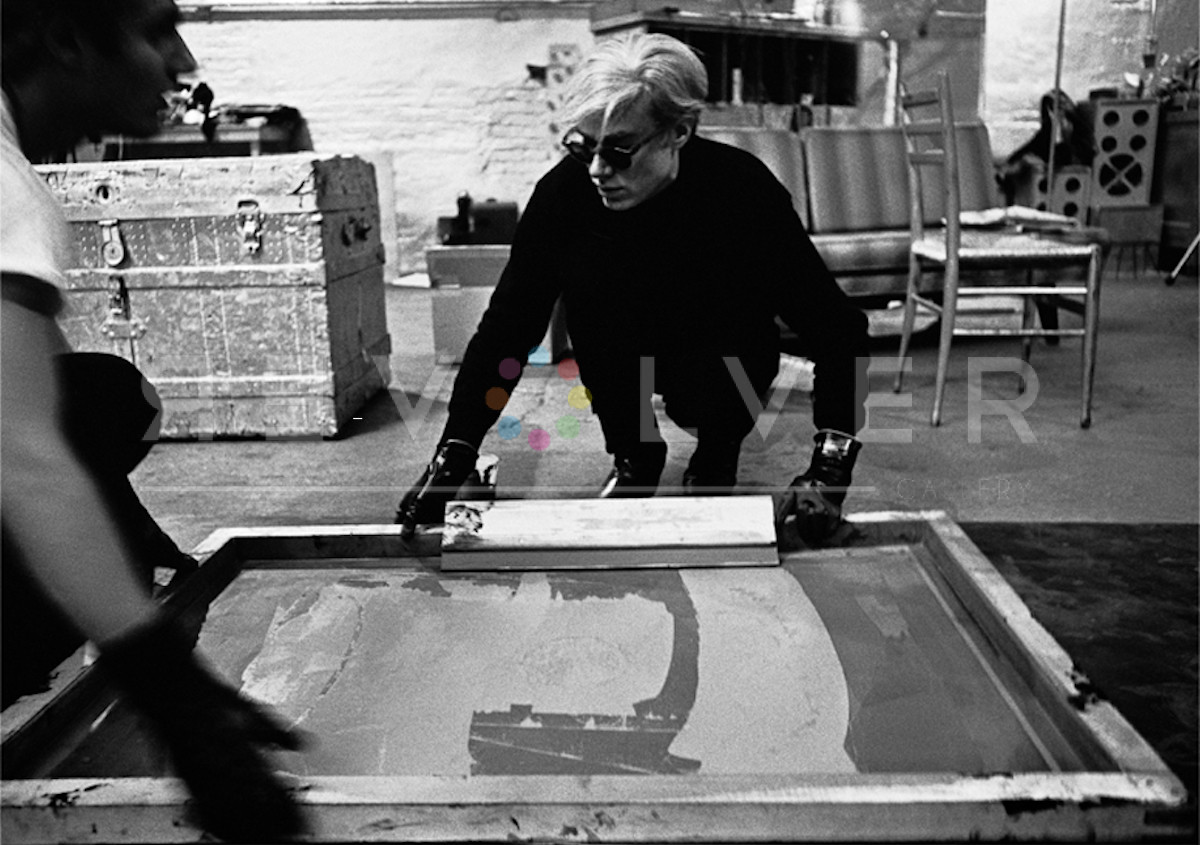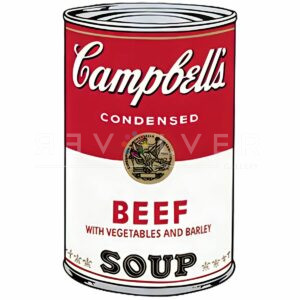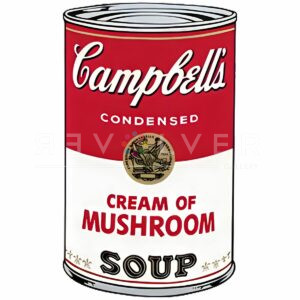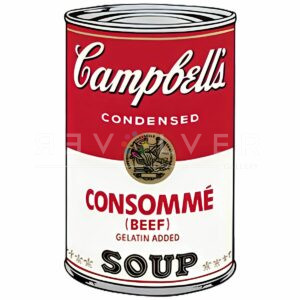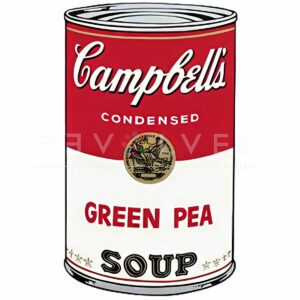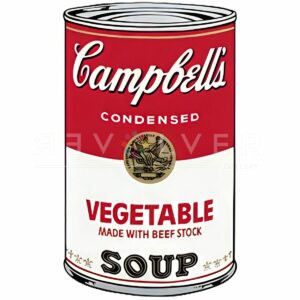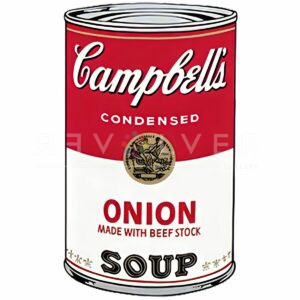Campbell’s Soup Cans I: Black Bean 44 is a print by Andy Warhol from the artist’s Campbell’s Soup Cans I portfolio made in 1968. The prints are absolute in their color, symmetry, and simplicity. Campbell’s Soup Cans I: Black Bean 44 is part of Warhol’s first of two Campbell’s Soup Can print series, each containing 10 images of different flavors. His second soup portfolio, Campbell’s Soup Cans II, included similar images, but with added illustrations for each flavor. Both series are amongst his most valuable portfolios of all time. As some of his earliest works, the soup can concept was vital in the popularization of Pop Art.
In addition to being the most famous soup cans in the world, their simple design greatly fascinated Andy Warhol. As a Pop artist, Warhol became known for elevating familiar logos, objects, and faces to iconic status. In particular, Andy loved the Campbell’s Soup logo. Its design stayed the same for years and remained very successful; thus, the soup cans were some of the first objects to undergo the Warhol treatment. Andy became heavily inspired by mundane items due to the fact that they play a huge role in our lives, but are often overlooked. As a popular grocery store item, the soup is surely familiar to us all.
When Warhol’s first rendition of the soup cans, the 32 Campbell’s Soup Cans paintings, debuted in 1962, they made a big buzz in the art world. Abstract expressionism was the dominant art style of the time, and many artists took offense to his commercially-inspired 1:1 reproductions. Such a cold, hard style directly opposed the mantra of abstract art. Traditionally, mainstream art sought to transfer emotion and the artist’s internal world onto the canvas. Nobody had ever seen anything like the soup cans (not in an art gallery, that is).
For Warhol, expressionist aesthetics were overdone, and contemporary artists ignored the ubiquitous inventions of modernity. Warhol felt the simple creations of the modern age were full of splendor. He also had a very positive view of consumer culture and capitalism. Indeed, he loved money above all else, and doubtlessly painted the soup cans partly due to their financial success. He also claimed to have eaten the soup almost everyday for 20 years.
Similar to works like Chanel and Life Savers, the Campbell’s Soup Cans I: Black Bean 44 print can be seen as a profound commentary on the status-quo of art in the 1960s. By painting common objects such as these, Warhol holds a mirror to consumers and citizens everywhere. Moreover, they are a quintessential index of Warhol’s style and his philosophy concerning consumer culture. Andy noticed something holy in the average objects of consumption; something sacred in the mundane. Because of this, he was able to shift popular ideas of what “counts” as art, and inspire future generations of avant-garde artists. Campbell’s Soup Cans I: Black Bean 44 surprised the entire world, and helped ignite a new art movement that would remain in the history books forever.
Photo Credits:
- Andy Warhol tracing Campbell’s Soup silkscreen, The Factory, New York City, circa 1965 © Estate of Nat Finkelstein © 2021 The Andy Warhol Foundation for the Visual Arts, Inc. / Licensed by DACS, London
- Andy Warhol and Gerard Malanga make a painting, 1964. Vintage gelatin silver print, 10¼ × 14¾ inches; 26 × 38 cm. Photo by Matthew Marks.
- Andy Warhol, 1964. Vintage gelatin silver print, 10¼ × 14¾ inches; 26 × 38 cm. Photo by Matthew Marks.

